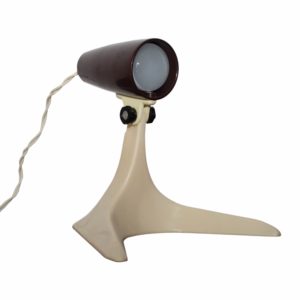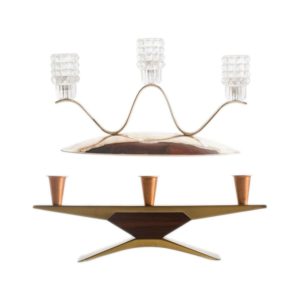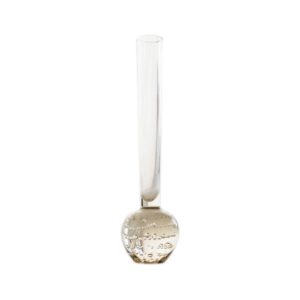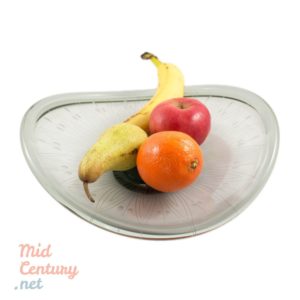Rare 50’s serving bar cart edited by RAMA Torino, Italy, 1950s
500 €
Rare serving bar cart edited by RAMA Torino and made in Italy in the 1950s. The cart is made of painted metal board with decorations in golden painted hard plastic. The table top and the bottom shelf are made of glass. The design is very exquisite and reminds as the suave forms of the Italian design in the La Dolce Vita era. The item has no major defects and shows just small traces of use. The cart has the original label.
In stock
You may also like
-
Sold out

Space Age table lamp made in Germany, in the 1960s
Sold ItemsBeautiful Space Age table lamp made in Germany, in the mid 20th century. The base of the lamp, resembling the fins of a rocket are made of beige plastic. The lightshade, made of dark brown bakelite also features an aerodynamic shape. Made in the 1960s, this is a representative piece fort the aesthetics of the Space Race era. The Space Age is a time period encompassing the activities related to the Space Race, space exploration, space technology, and the cultural developments influenced by these events. The Space Age is generally considered to have begun with Sputnik (1957). During the 1950s, architecture, furniture, interior design, cars, and gadget design took on a curiously spaceflight-inspired aesthetic.75 €
Additional information
| Design Period | 1950-1959 |
|---|---|
| Maker | |
| Material(s) | |
| Color(s) | |
| Weight | 9,2 kg |
| Dimensions (H x W x D) | 79 x 81 x 42 cm |
| Duties Notice | If your delivery address is not in the European Union, Iceland, Liechtenstein, Norway, or Switzerland, please be advised that import duty is not included in the prices you see online |
Product Enquiry
About Mid-Century
Art Deco, sometimes referred to as Deco, is a style of visual arts, architecture and design that first appeared in France just before World War I. It became popular in the 1920s and 1930s, and influenced the design of buildings, furniture, jewellery, fashion, cars, movie theatres, trains, ocean liners, and everyday objects such as radios and vacuum cleaners. It took its name, short for Arts Décoratifs, from the Exposition Internationale des Arts Décoratifs et Industriels Modernes (International Exhibition of Modern Decorative and Industrial Arts) held in Paris in 1925. It combined modernist styles with fine craftsmanship and rich materials. During its heyday, Art Deco represented luxury, glamour, exuberance, and faith in social and technological progress.
Art Deco was a pastiche of many different styles, sometimes contradictory, united by a desire to be modern. From its outset, Art Deco was influenced by the bold geometric forms of Cubism; the bright colors of Fauvism and of the Ballets Russes; the updated craftsmanship of the furniture of the eras of Louis Philippe and Louis XVI; and the exotic styles of China and Japan, India, Persia, ancient Egypt and Maya art. It featured rare and expensive materials, such as ebony and ivory, and exquisite craftsmanship. The Chrysler Building and other skyscrapers of New York built during the 1920s and 1930s are monuments of the Art Deco style.
In the 1930s, during the Great Depression, the Art Deco style became more subdued. New materials arrived, including chrome plating, stainless steel and plastic. A more sleek form of the style, called Streamline Moderne, appeared in the 1930s; it featured curving forms and smooth, polished surfaces. Art Deco is one of the first truly international styles, but its prevalence diminished with the beginning of World War II and the rise of the strictly functional and unadorned styles of modernism and the International Style of architecture.
Art Deco took its name, short for Arts Décoratifs, from the Exposition Internationale des Arts Décoratifs et Industriels Modernes held in Paris in 1925, though the diverse styles that characterize Art Deco had already appeared in Paris and Brussels before World War I.



















